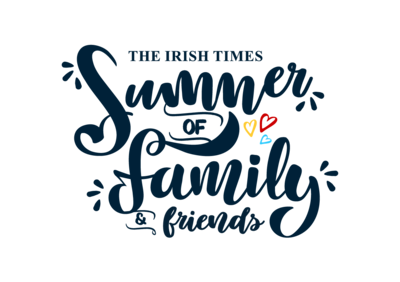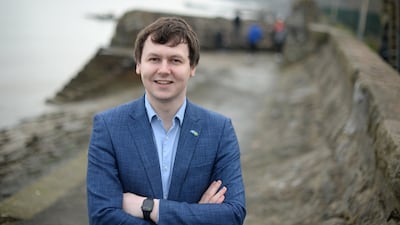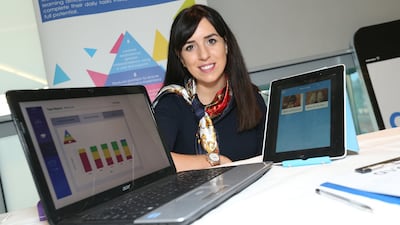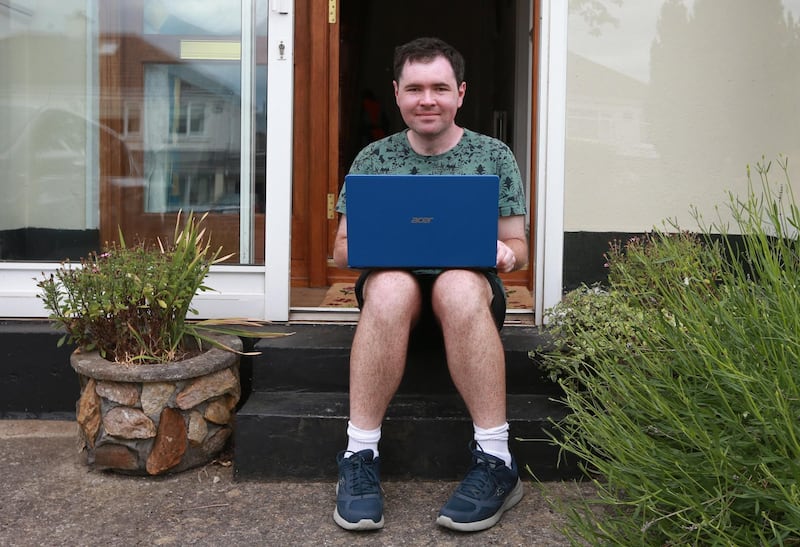
“Before Covid I didn’t know what Zoom was,” says Tomás Murphy. He and nearly everybody else on this island.
As one of three self-advocates with an intellectual disability on the board of Inclusion Ireland, it became an essential tool for him not only to attend online meetings but also to co-author a report for which members were interviewed about the impact of Covid-19 on their lives. But that was no bother to him, as he was already a frequent user of digital technology.
“I love computers and everything technical. I am on Facebook, Twitter, LinkedIn and all those social media things,” says the 30-year-old in, naturally, a Zoom call, from his home in Cabinteely, Dublin. He normally works two days a week as a general services assistant in A&L Goodbody Solicitors in the city centre and is looking forward to returning to the office later this year.
While he has found Zoom “a great way to see people” it is not the same as being in a room with them, he points out. “You don’t get the atmosphere.”
When the music of life stopped at the start of the lockdown in March 2020, Murphy was clearly sitting on the right side of the so-called digital divide. But others with intellectual disabilities were not so lucky and the past 15 months have highlighted not only the need to remove unnecessary barriers to their use of digital technology but also its potential in giving them more independence.
"There is a cohort of people who absolutely flourished in the digital world and were really able to grasp it, were able to attend consultations and have their voice heard, when they may not have been in a position to travel to Dublin previously," says Julie Helen, an advocacy worker with Inclusion Ireland, which promotes the rights of people with an intellectual disability. "We have had a higher reach in terms of getting out information and enabling participation."
The 2016 Census recorded 66,611 persons, representing 1.4 per cent of the population, as having an intellectual disability.
Left adrift
Among the constituency that Inclusion Ireland serves, there was a sizeable number who were left adrift and isolated from their day services during lockdown. Prior to the pandemic, she explains, the use of internet-enabled devices was mostly a personal thing outside the services, where sometimes it wasn’t seen as a necessary or attainable life skill for those with an intellectual disability.
She hopes the past year and a half will have changed that attitude. “A lot of services have done really important work to enhance the level of hardware and the level of facility they have.”
It’s vital that continues. “We are not in a crisis any more but it is something that can really enhance life and how people can interact.”

Adam Harris, CEO of the autism charity AsIAm, believes the digital divide is very concerning and that it has become more apparent during the pandemic. Although he stresses that there is a huge breadth of need and ability in the autism community, so understanding of technology can vary very significantly. "There is an assumption that everybody has access to technology and there was a rude awakening that they don't."
Many of these families are socio-economically disadvantaged because it is estimated to cost about €28,000 a year to raise a child on the autism spectrum, due, for example, to loss of income and the need to pay for therapy.
Certainly, Harris reports, remote learning didn’t work for many autistic young people, who often need the support of a very skilled professional to learn.
An estimated one in 65 school students in Ireland is on the autism spectrum and for some, the concept of going to school online didn’t make any sense, he explains. It was a case of “I’m at home, I don’t learn here”. The cognitive ability required to learn online could also have been challenging.
On the positive side, AsIAm was hearing from some autistic teenagers and their families that online education proved to be a real respite from having to cope with moving from so many different sensory environments during a secondary school day.
Remote working
The area where Harris sees the most significant post-pandemic opportunity around technology is remote working. An estimated 85 per cent of the adult autism community are either unemployed or underemployed.
There are a lot of people who would be able to do a role full-time, he says, but the requirement to be in an office every day is exhausting – from commuting on public transport to dealing with the sensory challenges of an open-plan workplace. “They found remote working made a huge difference.”
As society reopens, they acknowledge they still need to meet people but if they could continue to work two or three days from home, in an environment where they are in control, they would be much less exhausted and would able to hold down a full-time job.
AsIAm has also learnt from its own adaptation to operating online, which is a great way to connect people, he observes. For instance, it started some events for specific interests, as a lot of autistic people have very specific interests and they may not be able to find like-minded people in their area.
Also, instead of running community events around the country to support families, the organisation is now hosting bi-weekly support events online now and getting a much larger attendance at them.
“There was a cohort of parents who could never come to meetings because the needs of their children are so challenging, they can’t get away easily.” Online support is more accessible.
Moving into an ever-more digital future, both AsIAm and Inclusion Ireland argue that time and investment has to be spent on ensuring that this will be an inclusive development. “I really do think we are getting into a space where access to technology is a rights issue,” says Harris.
Social media
Indeed, engagement by 150 people in a “Right to Connect” online conference hosted by Inclusion Ireland last December “showed the want and need to explore the digital world”, says Helen. They have to be provided not only with the tools but also the support to use them in a safe and appropriate manner.
Harris acknowledges that while social media can be a great outlet, members of the autism community can be very vulnerable to online bullying and scams. “There is always something sinister under every stone,” he adds, but that just underlines the need for more support in its use rather than a reason to exclude.
If we are going to support people in a meaningful way, then technology in all its forms has a place in services too
The response of day services for people with intellectual disabilities during the first lockdown was mixed. An Inclusion Ireland survey found that more than half of people with disabilities and their families had little or no contact or support from these services. Some got a few phone calls or text messages; other services sent out activity packs and had meetings by Zoom.
However, it has to be noted that not only were staff redeployed from some services to residential centres, but also the survey showed that 21 per cent of respondents said the person they supported could not use basic information technology equipment and software, even when it was available.
New frontiers
For the majority who can use it, or could with the right training and support, the pandemic has shown how it can open new frontiers for them, in education, as well as in social, civic and commercial spheres. “If we are going to support people in a meaningful way, then technology in all its forms has a place in services too,” says Helen.
Inclusion Ireland itself expects to continue with some online events even after in-person meetings are allowed to resume. As the organisation also works with family members who have caring responsibilities, webinars might be more convenient for them, she suggests. “There is certainly a place for both.”
Murphy believes there needs to be support at different levels, to get the technology out there for people with disabilities: from providing, for instance, refurbished laptops, to lessons in how online communication works.
“The support structures need to be there first,” he adds, “and then everything else will fall in place.”
MAKING TECHNOLOGY USER-FRIENDLY FOR ALL
Years before the Covid-19 pandemic struck, Applied Behaviour Analysis (ABA) tutor Lisa Marie Clinton had a vision of how tailored digital technology could offer 24/7 support to people with autism. Her inspiration was four-year-old Liam McArdle, with whom she was working at his home in Louth village.

“He was non-verbal but had very strong communication skills. If he really wanted a biscuit, you would know,” she laughs. “He was very clever and already using technology as a form of communication.”
Clinton, who had previously worked at one of the first ABA schools to be set up in Ireland, Abacas in Drogheda, used picture schedules to teach various skills, for example brushing teeth, writing letters of the alphabet, putting on clothes correctly. While Liam was making great progress with her, he wasn’t replicating those skills outside the room when she wasn’t there, when with his parents, or in the community or at school.
“That frustrated me a bit. It’s expensive therapy to provide one to one,” says Clinton, who was on a career break to do a master’s degree at the time but was regularly getting calls from parents who wanted her to work with their children. It troubled her having to choose who to help and not help but she couldn’t take on more than four in addition to Liam.
One day when she was gathering picture prompts for her tutoring, Liam was on his iPad taking pictures and videos. She watched, thinking, “hang on, I am supposed to be your teacher and you are using technology”. As his tutor she should have been the “biggest reinforcer” in his learning “but this iPad was his biggest reinforcer and I was thinking ‘I can’t compete’, and then I thought, ‘maybe I can’.”
That's how she became an accidental tech entrepreneur. Her ideas for providing ABA-style training as a virtual support gathered momentum after she presented "scribbles on a page" to technology developers and was backed initially by her local Monaghan Enterprise and then Enterprise Ireland.
The first version of Assistive Visuals in Achieving Independent Living (Avail) Support software was launched in 2017. “It acts like a 24-hour assistant, providing visual prompts on skills that individual can’t complete by themselves.” Somebody may use it while learning to master a task and then no longer need it; for others it can be a constant reminder of how something is done.
It made sense that they would take the product to the US, where the world of ABA originated. The awareness of assistive technology was greater there too, she says, as was the willingness to be innovative in both education and employment for people with disabilities.
“They were further along than where we’re at here in Ireland. They were ready to embrace it and the money and scale was there. Here an organisation might support 20 individuals – in the US there might be one organisation supporting 20,000 in one state.”

‘Solution to a need’
The “remote” imperative of pandemic life proved to be a huge boost for business and the company has grown by 600 per cent in the past year. “We had a solution to a need that a lot of organisations had,” says Clinton.
Last March, the company was acquired by Florida-based Central Reach, world leaders in technology for those with autism. But Avail Support is applicable for use with all cognitive-related conditions – brain injuries as well as intellectual and development disabilities, and even with certain mental health challenges, she says. It provides learning plans, assessments and progress reports.
“Anyone who needs that one-to-one support or repetition can potentially benefit from this.” Her goal as an educator is to get somebody as independent as possible, regardless of their disability.
She remains director of the company, now known as Avail Support by Central Reach, and is relieved she doesn’t have to worry so much about cash flow. The team in Ireland has been expanded “to accelerate the goals that I wanted to achieve”.
Assistive technology used to be seen as an adaption of something to help someone with a more physical disability, she says. Now it’s potential for those with cognitive disabilities as well is being recognised.
“It is a really exciting time for exploring other options, for passing on innovation – we can really change lives.” They’re working more now, for example, in the area of supported employment, producing virtual job coaching for individuals with special needs as companies strive to increase staff diversity. “I’m still the educator, still doing what I do,” she adds, “but able to serve more people now – thousands of individuals whereas before I was capped at six!”
Tragically, the little boy who gave Clinton the original idea and was intended as her pilot study, was diagnosed with an inoperable brain tumour in May 2015 and died seven weeks later, at the age of 5½. She vowed at the time to continue with the project in Liam's memory. His parents, Eileen and Ronnie McArdle, have also set up the Friends of Liam Foundation, to support families and children with autism, special needs and children diagnosed with childhood cancer.
“He was fearless,” adds Clinton, “so I said I have to be as fearless . . . and carry on.”




















